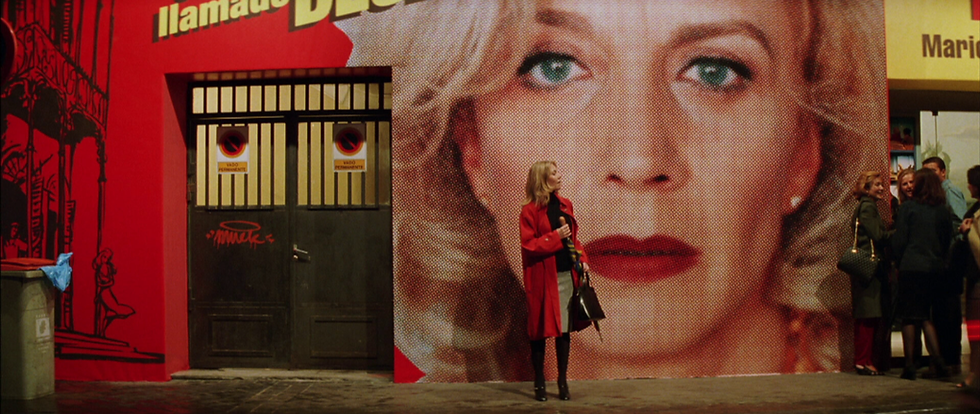The Sinister Revolution of Punk Rock | Irine Teneishvili
- therose379
- Nov 22, 2021
- 4 min read
Influenced by the dissent against authorities voiced by psychedelic rock in the 1960s and characterised by Jim Morrison’s transcendent, almost ritualistic live shows with the Doors, driving the audience into near-violent frenzies and leading to his arrest mid-performance in New Haven in 1967, punk emerged as an outcry of music, fashion and subculture against the political situation of the 1970s.
Punk was especially impactful in Britain around this time; in a decade defined by austerity and inequality, bands like the Sex Pistols and the Clash voiced public opinions towards the government. Perhaps one of the most influential albums at this time was the Sex Pistols’ ‘Never Mind the Bollocks’, the two lead singles of which, ‘Anarchy in the UK’ and ‘God Save the Queen’, featured lyrics such as “God save the Queen/ she ain’t no human being” and referred to the monarchy as a “fascist regime”, were banned by the BBC from being played on British radio. Bands like the Sex Pistols defined other aspects of the growing punk subculture, especially punk fashion, which was as much of an outward manifestation of public defiance as the music itself. It was around this time that bright dyed hair, piercings and tattoos and the signature punk ‘battle jackets’ came into fashion, as well as the DIY culture that rejected mainstream consumerism and encouraged people to make their own clothes. This revolution in fashion and image was highly significant; it was an act of rebellion purely encapsulated in self-presentation.

Punk music was significantly, although unsurprisingly, more popular amongst the working classes at the time, and the punk scene in cities like London and New York was made up of disillusioned working-class teenagers and young people who sought to shock society with their anti-authoritarian counter-culture. Influenced by the music of The Velvet Underground and Lou Reed, as well as Iggy Pop and early David Bowie, who all told stories of the oppressed and ignored in contemporary society, from Lou Reed’s ‘Walk on the Wild Side’ to Bowie’s ‘Rebel Rebel’, punk music sought to continue the ideas of these artists, albeit in a more violent manner.
The punk scene as a movement relied heavily on imagery; the punk ‘look’ was designed to shock older generations and included symbolism that remains controversial to this day. It remains debatable whether punk ‘icons’ such as Sid Vicious of the Sex Pistols and Siouxsie Sioux of Siouxsie and the Banshees wearing the Nazi swastika on their clothes during live shows really contributed at all to the revolutionary sentiments of the punk movement, or whether it was a meaningless shock factor that did nothing but turn people away from punk for fear of aligning themselves with the same fascist inclinations punk was ideologically opposed to. It is also arguable whether the iconography of punk, and the most prolific figures in the punk scene who were, and to some extent still are, almost glorified, actually contributed to punk as a revolution in the social scene, or even to the revolution in music. It is undeniable that punk had a huge influence on music for years to come, which we still see in the fact that we categorise certain rock as “post punk’ etc, still defining music based on its relationship with this period. However, we have to wonder whether people such as Sid Vicious, the controversial bassist of the Sex Pistols who never actually recorded a song with them, and who was charged with the murder of his girlfriend Nancy Spungen through stabbing in February 1979 deserves to be put on a pedestal as a revolutionary, or even as a genuinely meaningful part of the punk scene apart from the imagery of their relationship.

Punk was indisputably a revolution in arts and culture, the effects of which in music and fashion, as well as political sentiments, can be observed today. Yet we are forced to consider whether the way that we consume punk culture nowadays, with pre-made ‘battle jackets’ being sold on Amazon and the glorification of ultimately shallow imagery and senseless violence has descended into the very consumerist culture that punk originally served to fight against. Perhaps the focus on the wrong aspects of punk culture, for example those that used fascist iconography for the shock factor and the romanticisation of relationships such as Sid Vicious and Nancy Spungen, which has had a film adaptation, has served to lessen the potential political impact of a movement with ideals as radical as punk. But ignoring the facets of punk culture that are uncomfortable to us today would also ignore the fact that, for example, John Lydon, a.k.a Johnny Rotten, the lead singer of the Sex Pistols, has taken a documented racist and anti-immigrant stance in the past years, which arguably betrays the fundamental ideals of the movement he stood for. Perhaps the most important way to consume and understand the increasingly politically relevant ideas of the punk movement is to distance it from the somewhat shallow iconography of the time, reliant purely on futile shock factor.
Edited by Holly McGlue




Comments